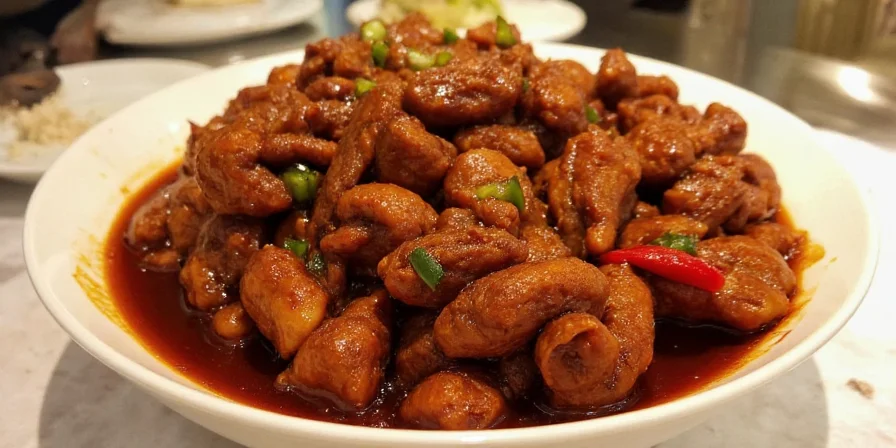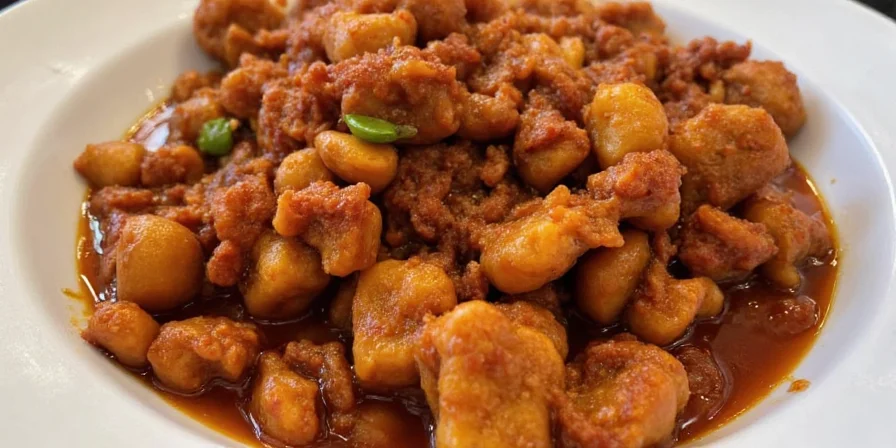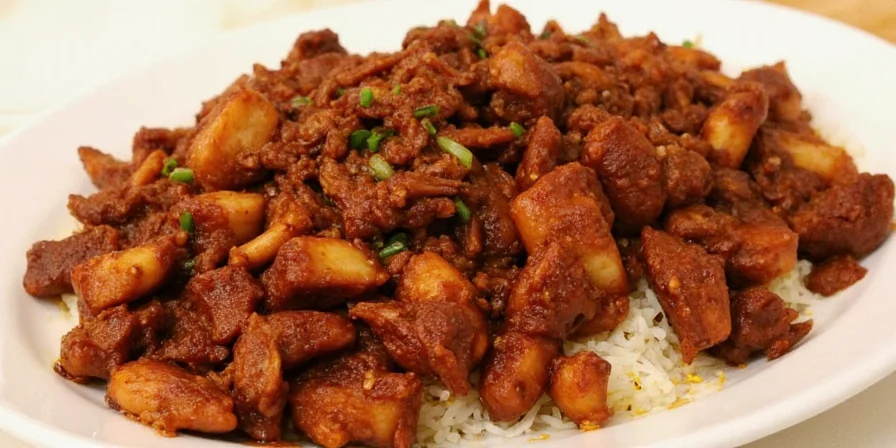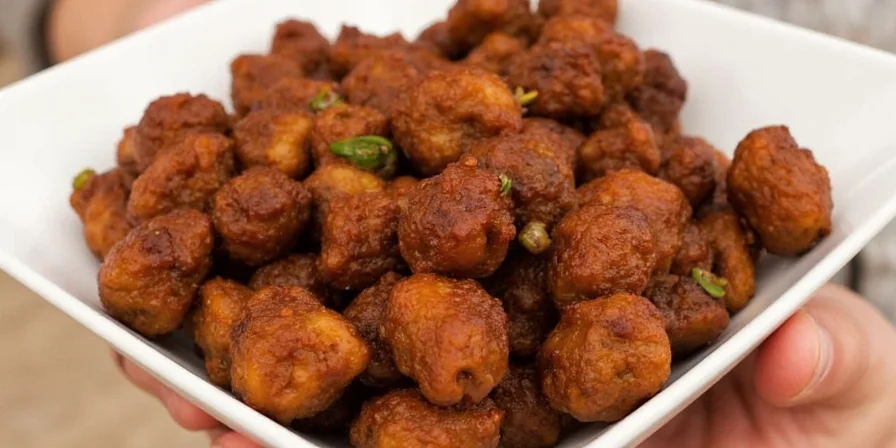🔥 Spicy Adobo: The Global Flavor That Packs a Punch
From the sun-kissed shores of the Philippines to the bustling markets of Mexico and beyond, spicy adobo has become more than just a dish — it’s a global sensation. Whether you’re a spice pro or a flavor explorer, this article will guide you through the fiery, fragrant world of adobo with a side of fun.
🗺️ Table of Contents
- What is Adobo Anyway?
- A Global Journey of Spices and Fire
- Why Spicy? Unpacking the Heat Factor
- Top 7 Tips to Master Your Spicy Adobo Game
- Adobo Spice Scale: From Mild Mellow to Nuclear Nice
- Debunking Myths: Does Vinegar Reduce Spiciness?
- Fusion Adobos: When Global Meets Local
- Conclusion
What is Adobo Anyway?
Forget everything you think you know. Adobo isn’t just one thing — it’s a family of recipes that share a common DNA: acid (usually vinegar), salt, garlic, and spices. The word comes from the Spanish verb "adobar," which means to marinate or season.
In the Philippines, adobo is considered the national dish — made with chicken or pork simmered in soy sauce, vinegar, garlic, and peppercorns. But across the globe, especially in Latin America, adobo takes on different forms — often as a seasoning paste or marinade with chili peppers front and center.
A Global Journey of Spices and Fire
The story of adobo is one of cultural exchange, colonization, and culinary evolution. It traveled with explorers and traders, adapting to local ingredients and palates along the way:
| Region | Style of Adobo | Signature Spice/Ingredient | Heat Level (1-10) |
|---|---|---|---|
| Philippines | Simmered meat in vinegar-soy-garlic sauce | Vinegar, bay leaves | 3 |
| Mexico | Red or green marinade paste | Ancho/Pasilla/Chipotle chilies | 6–8 |
| Puerto Rico | Dry rub (also called adobo seasoning) | Garlic powder, oregano | 2–5 |
| Peru | Yellow-based adobo | Aji amarillo pepper | 7 |
| United States | Fusion-style bottled sauces | Cayenne, paprika | Varies |

Why Spicy? Unpacking the Heat Factor
When you think of “spicy adobo,” you might imagine your tongue catching fire — but the heat isn’t just about showboating. Chilies are part of the natural evolution of adobo in many regions, particularly in Latin America.
- 🌶️ Capsaicin adds depth and balance to fatty meats
- 🌿 Antimicrobial properties helped preserve food before refrigeration
- 🧠 Eating spicy food releases endorphins — making us feel good!
Top 7 Tips to Master Your Spicy Adobo Game
Ready to take your adobo from “meh” to “magnífico”? Here’s how to level up your spice game without burning your taste buds off:
- Taste your chilies first: Not all dried chilies are created equal. Do a quick nibble test before grinding.
- Roast them gently: Toasting chilies enhances flavor without increasing heat — just don’t let them burn!
- Control the seeds: Most capsaicin lives in the inner white ribs. Remove for milder heat.
- Add acid last: Vinegar can intensify spiciness. Add it gradually after blending.
- Cool it down naturally
- Use fresh garlic: Pre-minced stuff lacks soul — go for the real deal.
- Let it rest: Marinating overnight lets flavors fuse like a culinary Avengers squad.

Adobo Spice Scale: From Mild Mellow to Nuclear Nice
Want to impress your friends with your knowledge of heat levels? Here’s a handy chart:
| Chili Type | Scoville Units | Flavor Profile | Best For |
|---|---|---|---|
| Guajillo | 2,500–5,000 | Berry-like, tangy | Chicken adobo |
| Ancho | 1,000–2,000 | Sweet, raisiny | Beef or veggie dishes |
| Chipotle | 5,000–10,000 | Smoky, earthy | BBQ-style adobo |
| Arbol | 15,000–30,000 | Grassy, sharp | Hot sauce lovers |
| Habanero | 100,000–350,000 | Fruity, floral | Brave chefs only! |
Debunking Myths: Does Vinegar Reduce Spiciness?
Here’s a myth we’ve all heard: “Vinegar cools down spicy adobo.” Let’s break this down.
Myth: Vinegar neutralizes capsaicin.Reality: Vinegar actually doesn’t neutralize spiciness — it balances it. Capsaicin is fat-soluble, not water or acid-soluble. So while vinegar won’t make the heat go away, it can create a more rounded flavor profile that tricks your brain into thinking it’s less spicy.

Fusion Adobos: When Global Meets Local
As globalization marches on, so does adobo. Chefs around the world are creating fusion versions that blend traditions and techniques:
- Korean-Mexican Adobo Tacos — with kimchi and chipotle
- Indian-Japanese Adobo Curry — coconut milk + yuzu + Kashmiri chilies
- African-Caribbean Jerk-Adobo Chicken — scotch bonnet meets garlic and vinegar
- Italian-Pinoy Lasagna Adobo — layer by layer, spice by spice

Conclusion
Spicy adobo is more than a recipe — it’s a celebration of culture, community, and the joy of heat. Whether you prefer your adobo smoky, fruity, or nuclear-level hot, there’s a version out there waiting for you.
So next time you reach for that bottle of adobo seasoning or decide to make your own, remember: you’re tapping into centuries of flavor, tradition, and culinary innovation. And hey, if it makes you sweat a little — well, that’s just life adding its own spice.
Now go forth, season boldly, and may your meals always be flavorful and your company always hungry.











 浙公网安备
33010002000092号
浙公网安备
33010002000092号 浙B2-20120091-4
浙B2-20120091-4